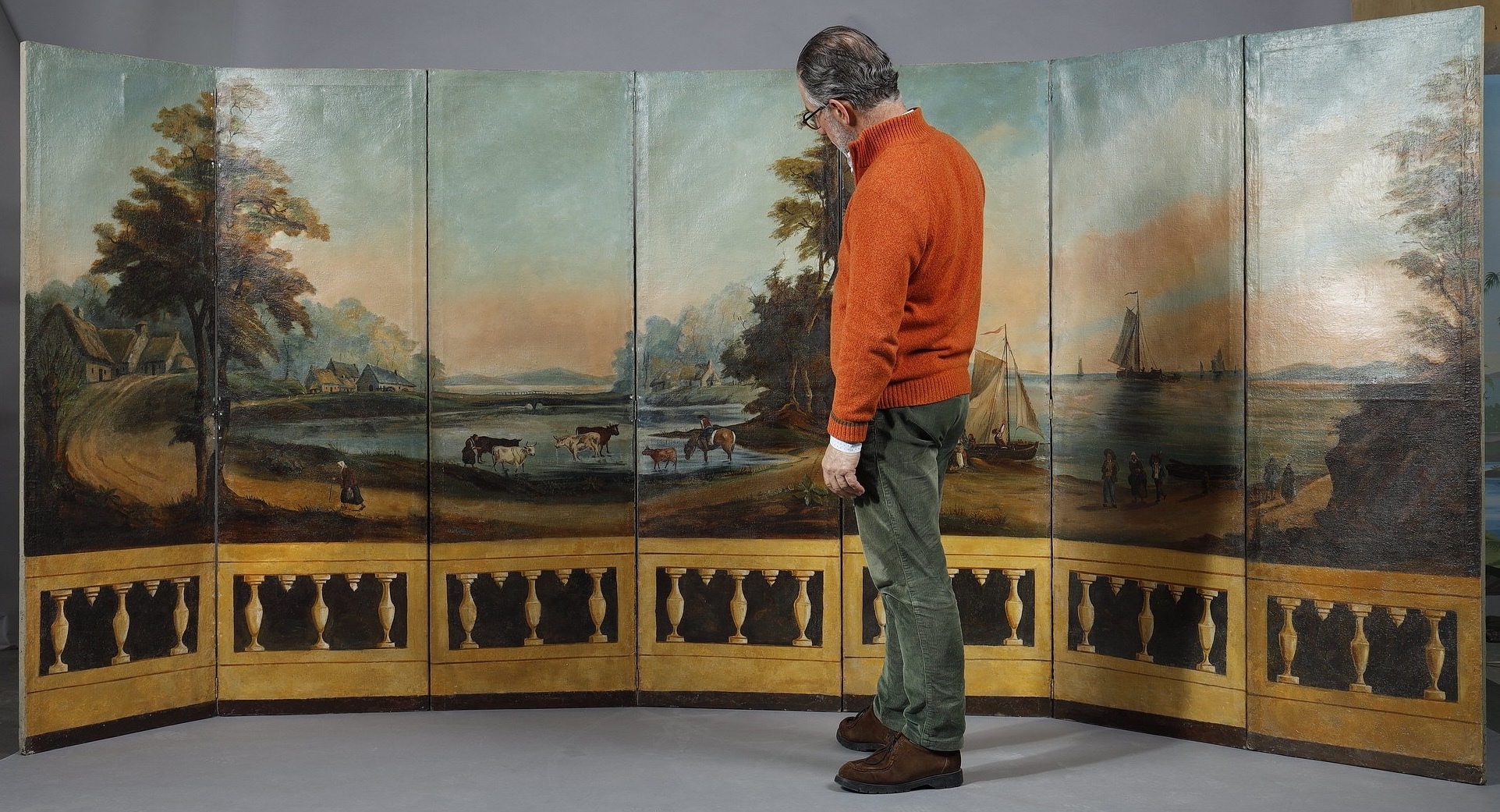The folding screen, from its origins in Asia to 19th-century salons
20.05.25
The folding screen, this versatile decorative element, has spanned centuries, bringing a touch of elegance and functionality to interiors. From ancient China to 19th-century salons , the folding screen has evolved, reflecting the styles and needs of each era. In this article, we will explore the fascinating history of the folding screen from Asia to Europe, focus on its 19th-century style, and discuss its usefulness in modern décor, highlighting four exceptional pieces from our collection.
The Story of the Screen
The folding screen, this versatile decorative element, has spanned centuries, bringing a touch of elegance and functionality to interiors. Originating in China , where it was first used to divide spaces and provide protection from wind and cold, the folding screen then spread throughout Asia, particularly to Japan , where it was adopted and adapted to become an essential element of traditional Japanese decor , known as " byōbu ." Chinese decorative techniques and motifs influenced the art of the folding screen in Japan, but Japanese artisans also developed their own unique styles and traditions. Over time, the use and style of the folding screen also spread to Europe, adapting to local tastes and needs.
The Folding Screen in Japan
In Japan, the folding screen, known as "byōbu," has a long history dating back centuries. Byōbu were initially used to divide spaces and provide protection from wind and cold, but they also served as a canvas for art and decoration. Japanese folding screens are often adorned with paintings and motifs that reflect Japanese nature, mythology, and culture. Japanese artists have used various techniques, such as lacquer, ink painting, and gilding, to create unique and sophisticated works of art. Byōbu have played an important role in decorating Japanese interiors, especially in traditional homes and temples. They continued to be created and appreciated during the Edo period (1603-1867) and the Meiji period (1868-1912), a time when Western influences began to be felt, but Japanese artistic traditions persisted.
Among the folding screens in our collection, we find a remarkable piece from Japan, dating from the Meiji period. This chrysanthemum screen, bearing the crest of the Honda clan, is an exceptional example of Japanese art from this era. The chrysanthemums, a symbol of the Japanese imperial family, are depicted with great delicacy, while the Honda clan crest adds a touch of history and nobility to the piece. This screen is not only a beautiful decorative element, but also a testament to Japanese history and culture.
The Folding Screen in 19th Century Europe
The 19th century saw a resurgence of interest in folding screens, particularly in Europe. This period was marked by a diversity of styles, ranging from Neoclassical to Romantic , influencing the design of folding screens. Screens of this era were often characterized by elaborate decorations, like the famous Louis XVI or Empire , which featured classical motifs and remarkable craftsmanship.
In our collection, we find three remarkable examples of European folding screens from this period:
- The first, a seven-panel painted canvas screen made in France around 1830, is an example of the use of painting to create narrative and decorative scenes. The panels, joined together by hinges, form a coherent whole that can be folded and unfolded as needed.
- The second screen, a four-panel mirrored screen in lacquered wood with a gilt bronze frame, illustrates the use of luxurious materials and sophisticated decorative techniques to create a spectacular visual effect. The mirrors add a touch of grandeur and sophistication to the room.
- Finally, the screen signed by Félix Bernard , dating from 1900, is an example of the influence of Art Nouveau on decoration. Made of mahogany, this three-panel screen features the fluid lines and organic motifs characteristic of this style. These three screens demonstrate the diversity and creativity that marked screen production in 19th-century Europe.
The Usefulness of the Folding Screen in Modern Decoration:
Today, the folding screen remains a versatile decorative element, capable of transforming a space by adding a touch of history and style. It can be used to divide a room, create an intimate corner, or simply as a decorative feature. Folding screens can also be used to add a touch of color and texture to a room.
Conclusion
The folding screen, with its rich history and ability to adapt to various styles, remains an attractive choice for those looking to add a touch of elegance and character to their interior. The four folding screens presented in this article, from our collection, illustrate the diversity and beauty of this decorative element throughout the centuries. Whether you are an antique enthusiast or simply looking for a unique piece for your home, the folding screen continues to offer an irresistible combination of functionality and aesthetics.





